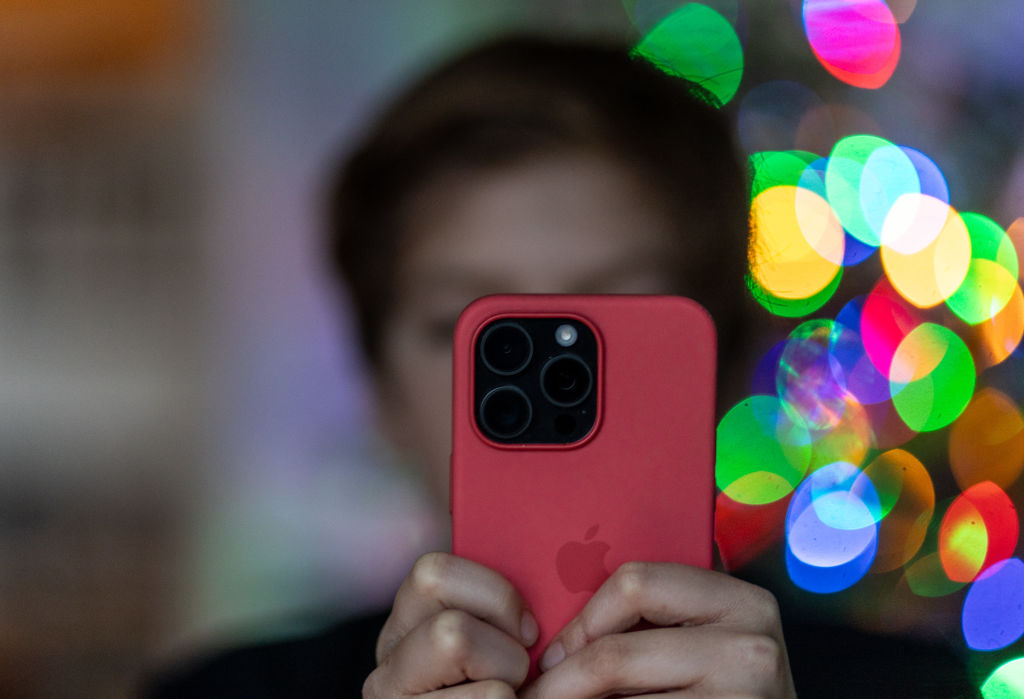Ask a parent today what they worry about, and many will mention screen time. Teens can’t put down their phones, TikTok becomes pervasive by sixth grade, and is my kid really doing homework on their laptop, or have they been watching YouTube for four hours?
Despite these concerns, many parents are resigned. “You can’t put the genie back in the bottle,” they’ll say if they’ve already given their kid a smartphone. Or they’ll sigh that being constantly online is “just how kids are now.” They’ll tell their kids they aren’t allowed on social media, only for their children to open accounts anyway. Many parents are beyond frustrated, and others have simply given up.
[time-brightcove not-tgx=”true”]
That’s partially because much of the advice out there on kids and technology is difficult to follow. Experts often say there is no one right age to give a child a smartphone, that “every family is different.” Eliminating screens entirely is not realistic for the average family with working parents and kids who do homework on laptops. The “digital literacy” approach says parents should educate kids about technology, and then expect them to make good decisions about how much time they spend online.
As any parent of teens can tell you, that doesn’t work. We need something that does.
I’ve spent the past decade primarily focused on two things: researching the negative impact of screen time on teen mental health, and raising three kids from childhood to adolescence. Like many parents, I’m both scared for my kids, and frustrated with my inability to completely protect them. But I’ve also become more and more convinced that this problem is fixable.
The solution is rules: not halfway or squishy rules, not “every kid is different” rules, not Luddite “no-tech-ever” rules, not “let’s just talk to kids” rules, but concrete suggestions for delaying and limiting devices while still letting your kids participate in the modern world of technology.
Talking is just not enough. Kids need rules because they are kids. They simply don’t have the same judgment or self-control as an adult. Imagine if we said, “Let’s just talk to kids about why they shouldn’t drink alcohol until they are older.” Or “there’s no one right age for kids to buy alcohol. Some might be ready at 12!” Or, if our kids and their friends started drinking at 14, “That’s just how kids are now. I guess you can’t put the genie back in the bottle!” As a society, we age-gate alcohol because we know kids aren’t ready for it. We have rules.
We need similar clear rules around technology use. My book 10 Rules for Raising Kids in a High-Tech World lays out, you guessed it, ten of them. But you don’t have to follow all of them, or follow them perfectly, to have a positive impact.
Start with Rule #2: No electronic devices in the bedroom overnight. Six out of ten 11- to 17-year-olds use their phone between midnight and 5 a.m. at least once a week, causing them to lose sleep every time the phone buzzes and they grab their phone to see what’s going on. The mere presence of a phone in the bedroom can disrupt sleep, kids don’t even have to be using it in the middle of the night.
Using devices right before bed is also disruptive; 11- to 14-year-olds slept a half hour less on nights when they texted or played games on a device while in bed before they went to sleep. If your kid says, “I have to have my phone in my bedroom overnight. It’s my alarm clock,” then buy them an alarm clock.
Rule #4 is that first phones should be basic phones. Phone choices now go beyond flip phone vs. smartphone. Basic phones, such as Pinwheel, Gabb, or Troomi, are the training wheels of phones. They have no internet browser, no social media, and no AI companions, but they can call, text, and take pictures just like a smartphone (most are Samsung Android phones). If you don’t want your kid on social media until they are 16 or older—and that’s the growing consensus—basic phones make that much easier, while allowing kids to text their friends.
What if you’ve already given your kid a smartphone? You can indeed put the genie back in the bottle. If your kid is 15 or under, switch out the smartphone for a basic phone. They’ll still be able to text their friends and contact you if they need help, probably the reasons you got them the phone in the first place. If they’re 16 or older, put parental controls on their smartphone. Yes, you’ll need to physically get the phone from them. If they push back, tell them that this is a condition of their having a phone. For the really tough customers, inform them you’ll stop paying the cell service bill if they don’t hand it over.
Implementing these rules is not always easy. But rules like these are much easier to follow than the unclear “every kid is different” advice. They’re more effective than expecting kids to make good choices when they’re up against companies pouring billions into making their products as engaging as possible. Even if you can only follow some of the rules some of the time, your kids will benefit. Don’t let the perfect be the enemy of the good.
Together, we can get our kids back.

